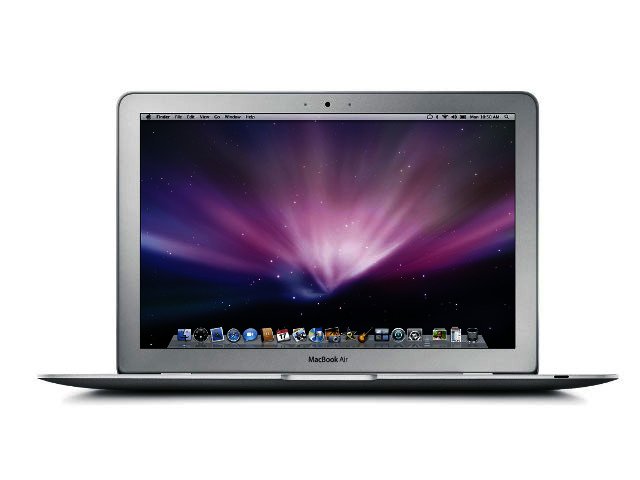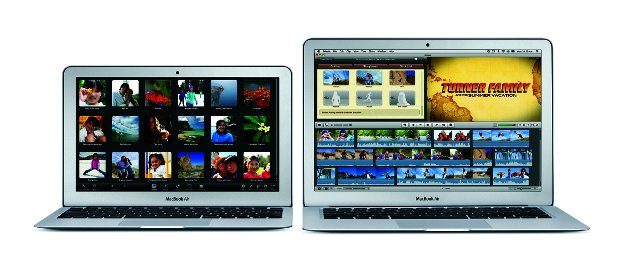PREVIOUS ARTICLENEXT ARTICLE
NEWS

Hands-on with the new Apple MacBook Air
By Johan Keyter 4 November 2010 | Categories: news
On the 20th of October Apple Inc. unveiled its new MacBook Air, a notebook that takes the thin form factor to the extreme while delivering a fast, simple computing experience to users.
We recently had the opportunity to have a little one-on-one time with the new device courtesy of the friendly folks over at have2have.co.za, and the slim new notebook really impressed us.
The new MacBook Air is available in either an 11” or 13” model, and continues where previous iterations of the device left off by supplying users with an even faster machine in an equally compact, and good looking wrapping.
Featherweight contender
The new MacBook Air is Apple's lightest and most portable notebook yet, weighing as little as 1.06 kg and measuring only 1.7 cm at its thickest point. One really gains an appreciation of its thin frame when you hold it in hand - this device is seriously thin, even outslimming bulky smartphones, which is an amazing feat in itself.

Solid state speed
The reason the device can attain this amazingly compact form factor is due to internal rearrangements by Apple. The new MacBook Air cashes in its old hard disk drives (HDDs), instead opting for faster and more reliable flash based storage in the form of internal SSDs (solid state drives), the same storage technology present in the new iPad.
“MacBook Air is the first of a new generation of notebooks that leaves behind mechanical rotating storage in favour of solid state flash storage,” said Apple CEO, Steve Jobs. He continued by stating, “we've taken what we have learned with the iPad – solid state storage, instant-on, amazing battery standby time, miniaturisation and lightweight construction, to create the new MacBook Air. With its amazing responsiveness and mobility, it will change the way we think about notebooks.
The inclusion of SSDs makes the new MacBook Air more reliable since it removes mechanical failures from the equation. It also enables these devices to be much smaller while offering performance up to twice as fast as that of traditional hard drive storage.
We had heard talk of the amazing boot speed of the new MacBook Air due to its flash storage and decided to put this to the test. To our astonishment the petite notebook was able to boot up from a cold state in only 16 seconds. Try timing how long it takes for your notebook to start up and compare it to the 16 seconds of the MacBook Air and you really gain an appreciation of just how fast SSDs have made the device.
Hard disk drives isn't the only technology Apple is kicking to the curb, the device also does not sport any kind of optical drive, which means no support for CD's or DVD's, with Apple rather opting to give users streamlined web content. For the weight and size of the device we feel it’s a very fair sacrifice.

Battery
The MacBook Air also sports a fairly impressive battery, with Apple claiming up to seven hours of normal battery life and up to 30 days of standby time. Our friends at Have2Have feels Apple underrated its battery performance though, telling of how their device lasted for more than 10 hours playing music from iTunes throughout. We would have liked to have put the device through its paces on a full day at work while connected to the Wi-Fi network, but unfortunately we did not have that amount of hands-on time.
Features
A full-sized keyboard is included sporting Apple's raised chiclet key design, while a glass multi-touch trackpad will allow users to scroll, flip and rotate to their heart's content. A webcam, mic and stereo speakers also make an appearance, with built-in FaceTime integration allowing users to make video calls with the iPhone 4, iPod Touch and other Macs.
Under the hood the MacBook Air sports Intel Core 2 Duo processors with Nvidia GeForce 320M graphics. The 11” model comes with a 1.4 GHz CPU and 2 GB of RAM with either 64 GB or 128 GB of flash storage, while the 13” sports a 1.86 GHz CPU, 2 GB of RAM and either a 128 GB or 256 GB SSD option. Customers can also place customised orders which can include accessories, faster processors, 4 GB of RAM, MacBook Air SuperDrive and a USB Ethernet Adapter.
It’s interesting to see Apple opting for the 2 GB RAM option in its standard models, something which might affect the devices down the line as most new notebooks today are released with 4 GB of RAM as standard.
As far as connectivity is concerned the MacBook Air is equipped with 802.11n Wi-Fi networking as well as Bluetooth 2.1+EDR support, unfortunately no 3G options are available. The device sports a mini DisplayPort, two USB ports as well as an SD card slot available on the 13” model.
The new notebooks each ship with Mac OSX Snow Leopard as well as iLife, a suite of Apple applications for sharing photos, music and movies with others. This includes iPhoto, a photo viewer and manipulator, iMovie, a movie editing program that can transform home videos into funny theatrical trailers and GarageBand, an app that allows you to record songs and music.

Conclusion
From what we've seen so far, the new MacBook Air is looking to be a mighty impressive new range from Apple. The device is sleek, attractive, fast and includes all the applications you'd need for working, browsing and playing with photo's, music and movies, exactly what the Apple customer base craves. If you have the iPad and use the iPhone 4 you might as well make the jump and get the whole shebang by ordering the new Air.
No word yet on official pricing and availability of the new MacBook Air in South Africa, but the devices are expected to be available in the country shortly. In the meantime those who'd like to jump the local release waiting lists can order the device from have2have.co.za.
Images courtesy of Apple Inc.
USER COMMENTS
Most Read Articles
Read

Magazine Online
TechSmart.co.za is South Africa's leading magazine for tech product reviews, tech news, videos, tech specs and gadgets.
Start reading now >
Download latest issue
Have Your Say
What new tech or developments are you most anticipating this year?
New smartphone announcements (45 votes)
Technological breakthroughs (29 votes)
Launch of new consoles, or notebooks (14 votes)
Innovative Artificial Intelligence solutions (29 votes)
Biotechnology or medical advancements (24 votes)
Better business applications (160 votes)



